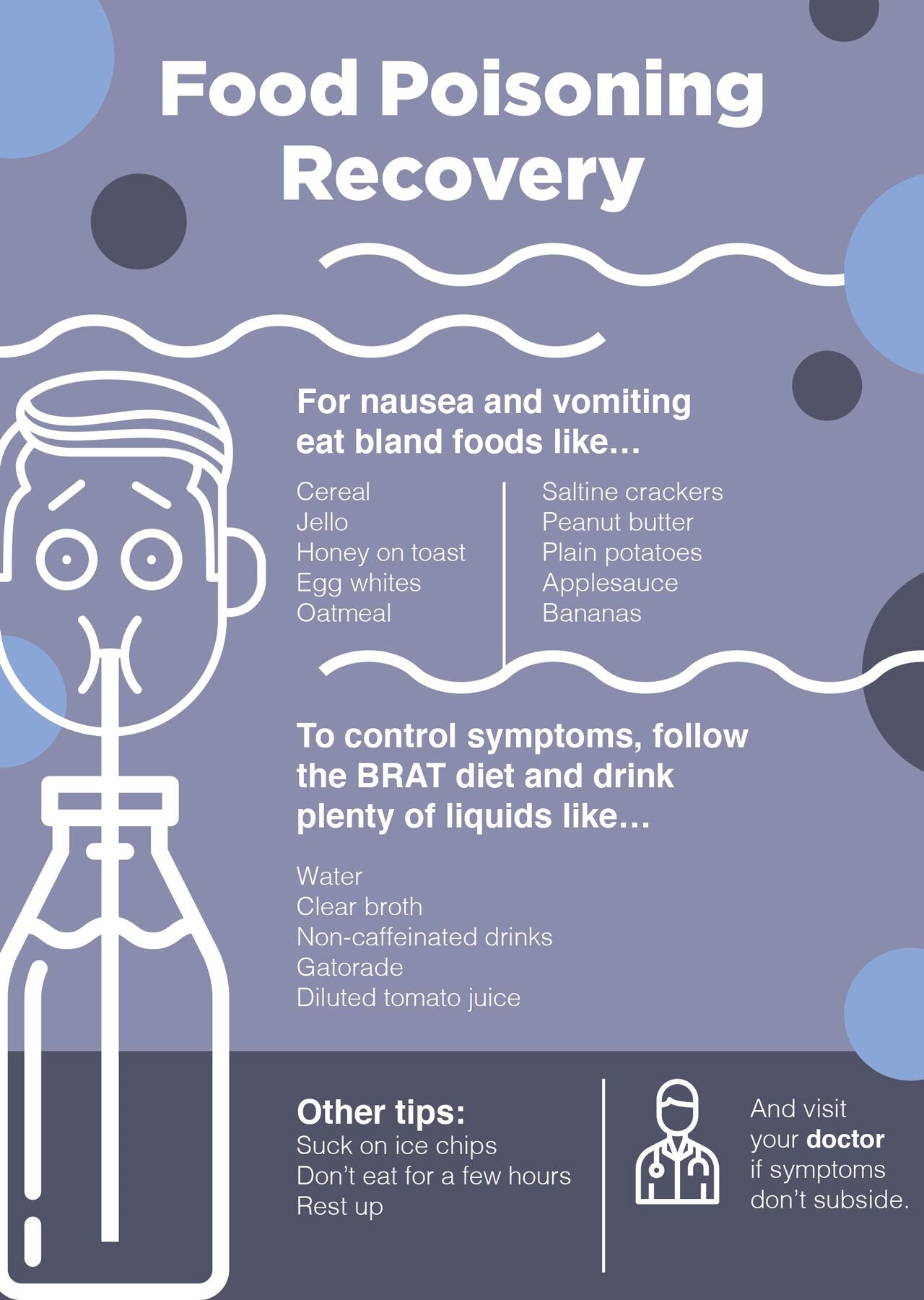You Have Food Poisoning. Now What?
 By: by Amino Science
By: by Amino Science

Food poisoning is probably the last thing on your mind when buying or preparing food and sitting down to eat. Yet, according to the Centers for Disease Control and Prevention (CDC), each year roughly 48 million people get sick, 3,000 die, and 128,000 are hospitalized from foodborne illnesses. It’s enough to make you sick. Despite ongoing research and advances in food safety and production, worldwide food poisoning remains very common.
Basic facts:
- The most common illness resulting from eating or drinking a contaminated substance is diarrheal diseases, causing sickness in nearly 550 million people and 230,000 deaths each year.
- Children under 5 years of age account for 40% of foodborne disease deaths.
- Contaminated food containing parasites, chemical substances, bacteria, toxins, viruses, and parasites cause more than 200 diseases—ranging from vomiting and diarrhea to meningitis and cancer.
Knowing the causes and symptoms (and what to do if you have food poisoning) means the difference between good health and becoming sick to the stomach.
Food and drink can become contaminated in many different ways ranging from:
- Improperly handling undercooked meat or raw shellfish
- Lack of hand washing
- Cross-contamination
- Someone with gastroenteritis touching unprepared food
- Food coming in contact with flies, pets, or other pests
- Food stored or cooked at unsafe temperatures
- Eggs, vegetables, or fruit exposed to animal feces
Foodborne illness is common in all parts of the world. It usually comes on suddenly, but lasts only a short time. Symptoms vary depending on the cause. In 2017, foodborne illness from bacteria was the most important food safety issue for adults in the United States.
What Is Food Poisoning?
Food poisoning is an illness caused by eating or drinking a substance contaminated with pathogens. The most common foodborne pathogens that cause food poisoning and affect millions of people every year are the Salmonella, Campylobacter, and Enterohaemorrhagic Escherichia coli (E.coli) bacteria. Foods that contribute to outbreaks include poultry, cooked or raw eggs and other animal byproducts, raw milk, undercooked or raw meat, water, unpasteurized milk, and fresh fruits and vegetables.
The Listeria bacteria can lead to severe and sometimes fatal illnesses caused by unpasteurized dairy products, soft cheeses like brie, raw fruits and vegetables, and various ready-to-eat and prepackaged foods, such as hot dogs and lunch meats. Although not common, listeria infection can cause acute disease in a fetus or newborn baby and in people with weakened immune systems. Pregnant women should exercise caution, as Listeria can induce miscarriage.
Another prevalent bacteria is Vibrio cholerae. This bacterium typically infects people through contaminated food and water and can lead to dehydration and profuse vomiting and diarrhea. Common culprits include raw vegetables and seafood.
Some species of Clostridium perfringens found in raw meat and poultry produce a toxin in the intestine that causes food poisoning, especially when large amounts of foods are prepared together and kept warm for a while before serving. School cafeterias, hospitals, prisons, nursing homes, and catered events are common ground for a Clostridium perfringens outbreak.
Parasites, like the fish-borne Trematodes, can only be transmitted through food. Tapeworms, on the other hand, may infect people through direct contact with animals or uncooked meat. Giardia, Ascaris, Cryptosporidium, and Entamoeba histolytica enter the food chain through contaminated produce and water.
Chemicals, heavy metals, naturally occurring toxins, and organic pollutants found in the environment or through industrial processes, waste incineration, fertilizers, and pollution can cause a wide range of symptoms, ranging from damage to the immune system, reproductive problems, neurological and kidney damage, cancers, and more.
Food Poisoning Symptoms
If you’ve ever experienced food poisoning, you likely remember the signs and symptoms well, which can range from mild to severe.
- Nausea
- Vomiting
- Cramps
- Diarrhea
- Abdominal pain
- Fever
- Loss of appetite
Food poisoning recovery varies. Most people endure symptoms that last only a few hours to several days. Individuals with more severe food poisoning may need to be hospitalized. If you notice any of the following food poisoning symptoms, do not hesitate to seek immediate medical attention.
- Severe dehydration
- Lightheadedness
- Lack of urine or dark urine
- Rapid heartbeat
- Low blood pressure
- Confusion
- Bloody stool
- Blurry vision
- Diarrhea that lasts 3 or more days
- Extreme abdominal pain
- Fever of 101.5 °F or more
- Nonstop vomiting
- Tingling in your arms
- Muscle weakness
Some illnesses can result in serious complications and long-term health problems, such as chronic arthritis, brain and nerve damage, kidney failure, and even death, which makes it essential to know what to do if you have food poisoning.

What to Do If You Have Food Poisoning
If you think you have food poisoning from seafood or wild mushrooms, if you are extremely dehydrated, or if symptoms get increasingly unbearable and last for more than 3 days, call your doctor. To control nausea and vomiting, eat bland foods, such as rice, bananas, and saltine crackers. Other foods that are gentle on the stomach include:
- Cereal
- Jello
- Honey on toast
- Egg whites
- Oatmeal
- Peanut butter
- Plain potatoes
- Applesauce
The BRAT diet is a good diet to follow when treating symptoms of food poisoning. However, as the American Academy of Pediatrics no longer recommends this diet as the sole means of treating foodborne illness, it is best to use this diet for a limited time only and supplement it with other proteins and micronutrients to encourage healing.
Food poisoning treatment also includes eating light and drinking plenty of liquids. To prevent dehydration, drink clear liquids like water, non-caffeinated drinks, clear broth, and rehydration solutions. Signs of dehydration include intense thirst, dry mouth, little or no urination, dizziness, and weakness.
It is essential to replace minerals such as sodium, calcium, and potassium that help maintain a balance of minerals in your body. An imbalance in these minerals often leads to persistent vomiting and diarrhea that require hospitalization.
Doctors may also prescribe antibiotics, which can help illness caused by certain kinds of bacteria, or if symptoms are severe. Food poisoning caused by Listeria, for instance, often requires intravenous antibiotics administered in a hospital. Home remedies, such as sucking on ice chips, avoiding eating for a few hours, resting, and easing back into a routine can significantly speed recovery.
Once you start feeling better, it can be helpful to supplement with essential amino acids to restore the amino acids lost during illness.

Preventing Foodborne Illness
It is nearly impossible to completely protect you and your family from food poisoning. However, simple habits like hand washing, cooking foods to the proper doneness, and preventing cross-contamination can eliminate many of the pathogens that cause foodborne illness.
Hand washing and hand hygiene can often eliminate pathogens introduced into food or transferred from one person to another. Kitchen tools and surfaces can become contaminated by raw meat and poultry, transferring microbes to other food. Washing the surface of a cutting board or knife in between uses will greatly reduce the possibility of cross-contamination.
Pathogens need to multiply to large numbers in order to cause illness, so storing food in the refrigerator or freezer can prevent virtually all bacteria from growing. Likewise, if food is heated to proper temperatures, parasites, viruses, and most bacteria will be killed. Some food and drink are contaminated by animal waste or human sewage. Washing fruits and vegetables and cooking meat and poultry can help eliminate potential risks and foodborne microbes found in these substances.

The Ever-Changing World and Food Safety
Guy Fieri, chef, and host of Food Network’s wildly popular show, Diners, Drive-ins, and Dives, once penned, “Cooking is all about people. Food is maybe the only universal thing that really has the power to bring everyone together. No matter what culture, everywhere around the world, people get together to eat.”
However, safe food supplies is an ongoing concern on every continent in the world. Changes in consumer habits, including travel, contribute to growing numbers of people eating food in public places, resulting also in an increased demand for a wider variety of food. A growing population requires expanding and managing agriculture and animal production, storage, and distribution. Even climate change is predicted to impact food safety as temperatures rise and fall and safe storage of perishable foods becomes increasingly complex.
These challenges, along with many others, have forced government agencies to establish stricter guidelines for food safety over the past decade. To determine areas of improvement, the U.S. Food and Drug Administration and the U.S. Department of Agriculture continually identify and take relevant food safety measures to ensure food safety is met.
Even so, food poisoning remains a health issue impacting millions of people every year. Prevention efforts and worldwide collaborative best practices by the food industry, public health agencies, and regulatory commission are needed to further reduce foodborne illness and create an effective food safety system for the future.

Up to 25% off Amino
Shop NowTAGS: conditions
Join the Community
Comments (0)
Most Craveable Recipes




 833-264-6620
833-264-6620



















